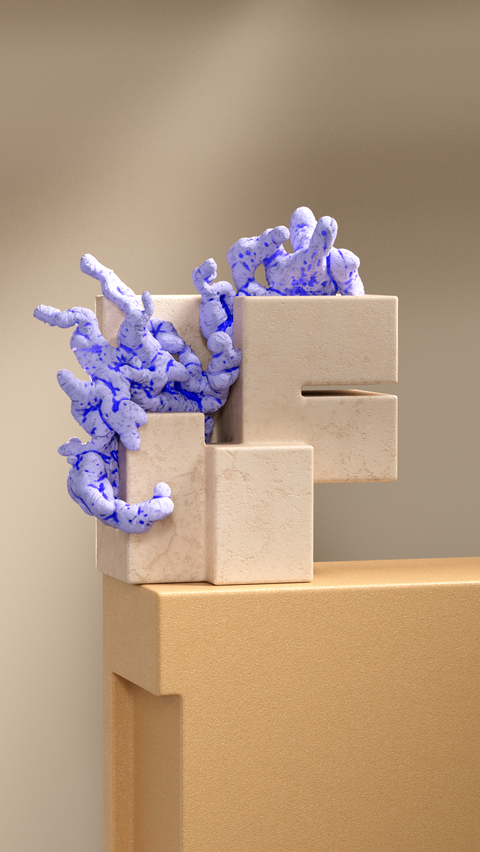

Digital Shift exhibition by Get it Studio
Crafting at the edge of virtual and material realities
The creative duo Get it Studio was back in Tokyo from May 31 to June 7 to present their latest work – Digital Shift, an immersive exhibition, which explores how technology can augment human’s perception and visual experience. Discover more in a second interview, where they look into the impact of AI & AR technology on their work, which blurs the lines between the material and virtual.
Get It Studio is made up of two Swiss artists, Sandra Golay and Alexandre Armand. Aside from research, the Swiss creative duo also does work for clients, including Google, Adobe, Uniqlo, Rolex and Logitech. The duo works at the border of technology, nature and architecture to devise new kinds of visual expression. Their unique aesthetics injects artificial forms of life into graphic and brutalist environments, questioning the profound impact of digitalization on perception and visuality. Their latest project, Digital Shift, took the form of an immersive exhibition that blurs the lines between the material and virtual. Combining inflatable sculptures, interactive installations and media, Digital Shift augments both reality and human experience, unleashing the viewers’ imagination.
The Digital Shift exhibition received the support of the Vitality.Swiss program.

Interview: Creative duo Get It Studio - 2

During our exhibition, we created an AR face filter that allowed people to try it out from the street in front of the gallery, and it garnered a lot of attention. Additionally, we placed an AR creature in the center of the gallery that could be viewed through a tablet, and it received a positive response. Just imagine the possibilities that would arise with a device like Apple's Vision Pro – the potential for creators like us is limitless.
In terms of commercial applications, the fashion industry stands to benefit significantly from AR. For example, the Zero10.app allows users to virtually try on and purchase clothing, offering an alternative to buying physical garments. These virtual clothes can be shared on social media, potentially contributing to a reduction in fast fashion. Nike has already implemented a platform for selling digital sneakers that can be viewed through an AR app. Additionally, AR has great potential for interior design and architecture. As an example, some of our close friends recently purchased an apartment after virtually visiting it using a headset device.

As for the future, it's impossible to know for sure where we'll be in five years. Just a year ago, if you had asked us about the role of AI in the creative field, we wouldn't have had a clue. Technology is advancing rapidly, and our main goal is to stay up to date with the latest trends. However, it's also important to strike a balance and not get too caught up in chasing new innovations. We believe it's valuable to take the time to appreciate and enjoy the creative process itself.
Article’s cover:
© Get it Studio
